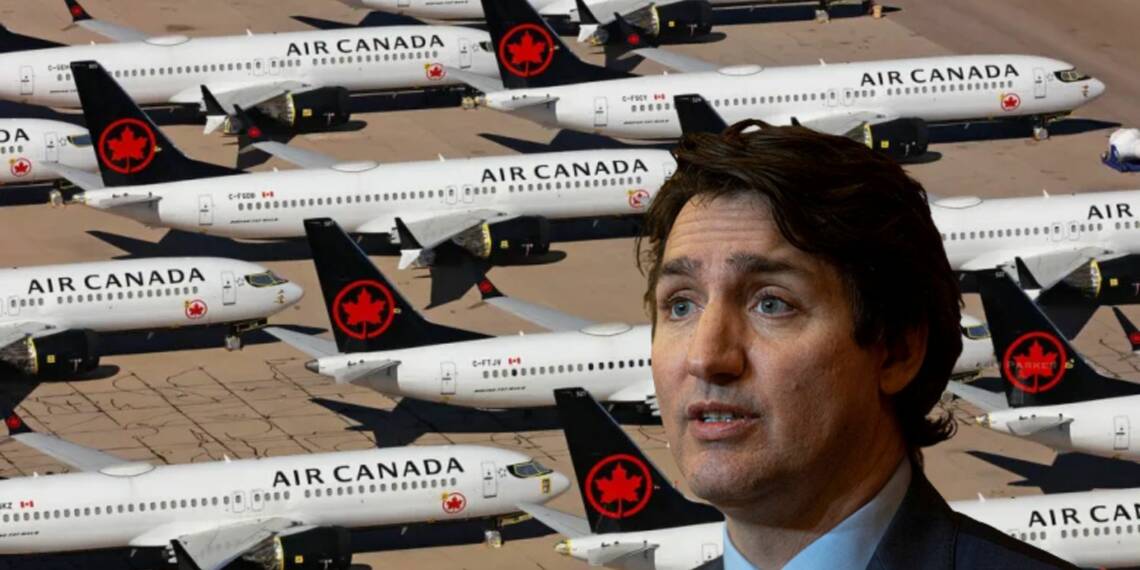Under Justin Trudeau, the average Canadian’s existence has been marked by despair and hardship. Talk about the Canadian Airline Industry. The situation of global aviation has been a disaster, especially in recent months as pandemic-related travel restrictions have been lifted, putting an enormous load on airlines and airports. For Canadian passengers, the issue has only become worse as Trudeau struggles to find a way out of this mess.
From pandemic-related travel restrictions to extreme weather disasters, the Canadian travel industry has recently faced unprecedented levels of uncertainty. And now, just as travel demand has restored to pre-recession levels, airlines are encountering their next stumbling block: a shortage of experienced pilots.
According to Transport Canada, in a typical pre-pandemic year, roughly 1,100 pilot licenses were issued. When complemented by foreign-trained pilots, that was generally more than enough to satisfy the needs of carriers as large as WestJet and Air Canada, all the way down to regional, charter and cargo airlines.
But as demand for flying collapsed in 2020, so did the number of new pilots getting their paperwork. Government data shows less than 500 licenses were awarded in 2020, a figure that fell to less than 300 in 2021 and just 238 last year.
The number of commercial pilot licenses issued in Canada has declined by more than 80 per cent since 2019, even as aviation experts warn of an ever-growing labour shortage that threatens to disrupt Canadian Airline Industry.

Also Read: The sorry state of Canadian Airlines under liberals
The numbers, you see, reflect a greater concern about the status of the aviation sector and the stability of piloting as a career choice. In the midst of the pandemic, Trudeau’s faulty policies created significant challenges for Canadian pilots.
When travel ground to a halt during the beginning of the pandemic, Canadian airline industry jobs were eliminated. But as demand for flights escalated quickly this summer, there weren’t enough people working at security checks, air traffic and border control.
Many pilots sought to wait out furloughs and layoffs at major and minor airlines, but many simply went on. Many people who had enterprises or other hobbies had to leave the industry after six months to a year because they needed to put food on the table. The Liberal government’s lack of institutional backing was a major motivator for these pilots to hunt for work in other countries or sectors. Unlike, say, the agriculture industry, the aviation industry never received significant government support to help it recover from pandemic-induced disruption. Instead, the industry was dictated with green agenda and was told to use the aid provided to it for achieving green objectives.
Without a doubt, it will take some time before young people regain the confidence to enroll in aviation schools. What if another global disruption forces the government to lay them off? Training is really expensive. In 2023, becoming a commercial pilot will cost upwards of $100,000, more than double of what it did 20 years ago. While an experienced captain at a mainline carrier can expect to make well over six figures, most young pilots must spend a decade gaining experience on rural and northern flights or at lower-paying budget airlines before aspiring to that level. Why would people go through such an ordeal only to have their employment taken away?
There are numerous things the government and airlines could do to help stabilise the pilot supply in this country, ranging from financing training to make it cheaper to ensuring that the quantity of training seats available across the country corresponds to industry demand. But, alas, Trudeau’s policy naiveté does not inspire confidence that such drastic measures will be taken.
https://www.youtube.com/watch?v=9DyJSonfDJU








